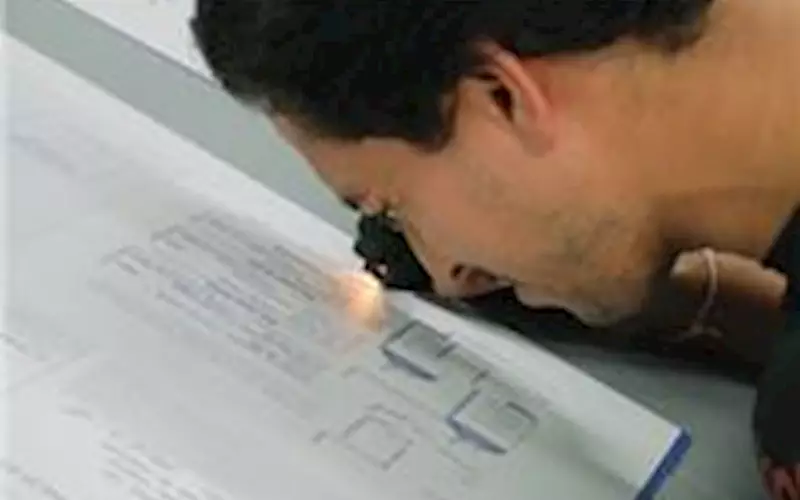Anti dumping duty - at a glance
The volume of digital plate production in China is 150 to 170 million square metres per annum versus Indian consumption which is around 25 to 30 million square metres per annum.
05 Apr 2012 | By Samir Lukka
The reason the anti-dumping duty was been sought is, based on the contention that "a variety of plates (except inkjet and polyester plates) are being dumped into India at prices below cost."
The modus operandi is simple. The Chinese exporters over-invoice the PS plates by showing the CIF at the same level as the reference price i.e. $3.84 per square metre to avoid anti-dumping duty. Then they transfer the over-invoiced amount (ranging from say $0.50 to $1.00 per m2 to the Indian importers through the unofficial channels).
So what is a reference price?
Reference pricing: Based on it’s finding, the authorities have validated that the domestic industry is entitled to protection against dumping of Chinese digital offset plates. However, instead of providing the protection in the form of either a fixed amount of duty or fixed percentage of duty, the authorities have chosen to declare a reference price for each category of product. If the imports from China are priced below the reference price, the anti-dumping duty rate will be equal to the difference between the landed value and the reference price. Based on the prices at which digital plates were being imported from China during the period of investigation (2010-11), the approximate anti-dumping duty rates would be as follows:
- Thermal CTP plates from China: 2%-8%
- Thermal CTP plates from other countries: Nil
- Violet CTP plates from China: approximately 18%
- Violet CTP plates from other countries: Nil
- UV CTP plates from China: difficult to quantify
- UV CTP plates from other countries: Nil
With the exception of the Agfa, Fuji and Kodak, the sales of the rest of the Chinese plate manufacturers is said to be in the range of one million to three million square metres per year. The top four account for over 90% of the total Chinese production of digital plates
The scenario for a market like India is: the total number of plate manufacturers has diminished from over 150 in 1990 to less than 10 now (excluding China). The total number of countries having local manufacturing facilities has diminished from 30-40 to essentially USA, EU, Japan, China, Brazil and India.
Interestingly enough, the Brazilian government recognised the need to protect their industries from dumping and imposed steep anti-dumping duties on a range of products, including offset plates. This has enabled the local Brazilian manufacturer IBF to survive and grow. Turkey followed with anti-dumping duty on plates, but not in time to save its domestic plate manufacturers.
The Aluminium Association of India as well as Hindalco are actively supportive of the Indian petition. In fact, if the anti-dumping procedure had permitted it, they would have been co-petitioners. Hindalco recognises TechNova as one of their top three customers for aluminium coils, and the only one for their highest value-added product, litho-grade aluminium coils. Hindalco’s rolled product division would be seriously affected if TechNova were to close down. The Aluminium Association succeeded in getting anti-dumping duty (in the form of Safeguard Duty) on rolled aluminium products.
Circumvention of anti dumping duty: If a Chinese exporter over-invoices his digital plate and declares the price as per the reference price, he would not have to pay any anti-dumping duty. In other words, Chinese exporters can easily circumvent the anti-dumping duty on digital plates, as they have been doing in the case of PS plates since the imposition of reference price based anti-dumping duty structure from September 2007.
I spoke to TechNova about the concern among Indian printer firms on digital offset plates’ pricing
A TechNova official response said: "We do not expect that the anti-dumping duty prescribed in the preliminary findings will have any impact on the pricing of imports of thermal CTP or violet CTP."
The reasons given were, "the reference price mechanism can be expected to be circumvented, nullifying totally the effect of the anti-dumping duty; the prescribed duty rate for thermal CTP plates is insignificant at 2%-8%. Bulk of the consumption of digital plates in the commercial and packaging print segments is thermal CTP plates; there are almost nil imports of violet CTP plates from China."
Finally, when we spoke to TechNova about the allegations of being monopolistic, they said, "TechNova fully intends to honor its historical policy of passing-on only the cost increases as evidenced by the published LME prices, forex rates and other key input costs. Therefore, except for these cost related factors, which can go in either direction, the prices of domestic digital plates will remain unchanged."
LATEST POLL
Is the imposition of anti dumping duty on imported plates - a good thing for the Indian print industry?














 See All
See All